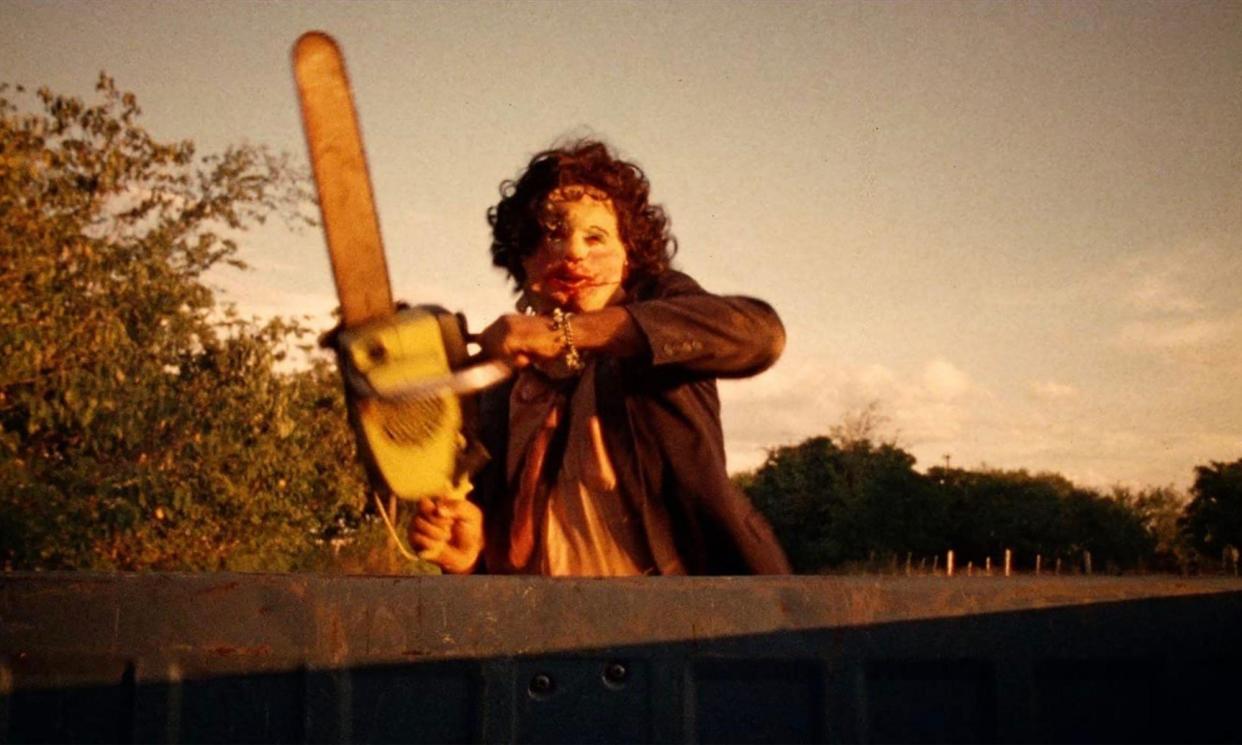The Texas Chain Saw Massacre review – original 1974 shocker is grotesque but brilliant masterpiece

In 1974, Tobe Hooper released this intimately upsetting and disturbing horror: a gonzo-macabre masterpiece inspired by the true story of serial killer Ed Gein, who was arrested in 1957 for grisly atrocities in remote Wisconsin. (Texas sounds better in the title.)
Hooper’s minimalist shocker appeared just 14 years after Hitchcock’s sleek Psycho, which was also indirectly inspired by Gein (via the novel by Robert Bloch). Psycho is a far more refined variation on the Gein theme, more like Edgar Allan Poe. In contrast, The Texas Chain Saw Massacre feels utterly different: gritty, gloomy, social-realist; a no-budget account of how the Gein horror might have felt to those who actually encountered it. It feels closer, in its down-home style, to something like Barbara Loden’s Wanda, from 1970. Compared with the screeching slashers and their jump scares which it inspired, this is almost … well, not restrained exactly but more controlled, less generically self-aware, readier to defer its shocks. It is pre-formulaic. The first bizarre murder happens with no stabbing musical score on the soundtrack, with the camera positioned unresponsively at the other end of the room.
The setup is this: a bunch of college-age kids show up in rural Texas in a van because they’ve heard a crazy person is digging up corpses from graves thereabouts and placing them in bizarre positions around the monuments; we see a gruesome example in the opening shot. People are concerned their loved ones are being desecrated, and our heroes are among them. One of them feels that her grandfather has had his eternal rest disturbed in this horrible way.
Whatever relief they feel on finding that this is not the case is short lived. They pick up a deeply disturbed hitchhiker, gurning and giggling, who slashes the arm of one of them with a straight razor and marks the side of their van with blood as he is being thrown out – marking the fabric of the film itself with the promise of violence. The gas station they arrive at has no gas, just some mute good ol’ boy who mops down the van, though without cleaning off the blood. Their grandfather’s old house, derelict, is near the abattoir which still apparently provides employment and a formative psychological experience for the country folk who live nearby.
In need of fuel, the youngsters notice a farmstead which runs on its own supply of oil and they (rashly) approach, hoping to ask for gas. There they encounter “Leatherface”, a monstrous recluse in a mask made from the face of one of his victims. He wields a chainsaw, and although we actually don’t see the effects of this in any very explicit way, it is certainly stomach-turning enough – especially in the grotesque but brilliant sequence in which one young woman – who was to inspire the “final girl” element in so much horror that came afterwards – is forced to sit down to dinner with Leatherface and his appalling family.
No other later horror film – and certainly none of the many sequels to this one – captured so well the strangeness of living through a long night of evil and emerging into bright sunlight, with its tacit promise of restorative justice or virtue, or just normality. When Leatherface and the others pursue Sally (Marilyn Burns) out into daylight in the unforgettable final sequence, you almost expect them to ignite, like Dracula. It is brutal, but inspired.
• The Texas Chain Saw Massacre is in UK cinemas from 14 June

 Yahoo Movies
Yahoo Movies 
